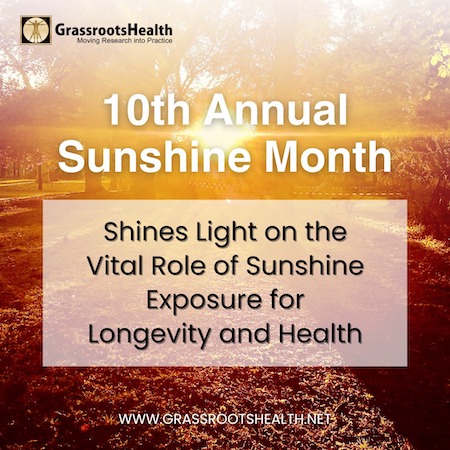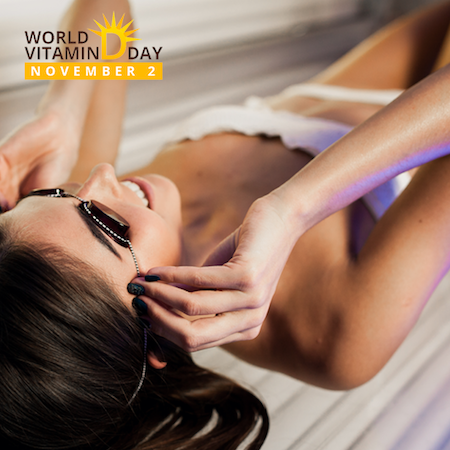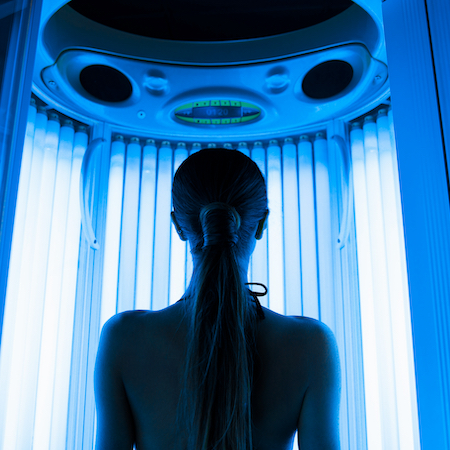TORONTO, Ont (April 4, 2017) – The daylight hours are getting longer, the sun is getting stronger and summer is just around the corner. Make this the year that you optimize your vitamin D levels through effective sun exposure. Enjoy the health benefits and disease prevention from optimal vitamin D levels and learn to control your risks from sun exposure.
Vitamin D is made naturally in your body when UVB rays from the sun convert cholesterol in your skin to pre-vitamin D3. We make about 90% of our vitamin D from UVB sun exposure. UVB rays are short and only reach the earth when the sun is directly above us. We can’t make vitamin D in the winter in Canada because the sun is at too low of an angle and the UVB rays are absorbed in the atmosphere.
You make vitamin D in Canada between the months of May and October. The best time for exposure is around midday, between 10am and 2pm, when the UV index is above 3 and your shadow is shorter than your height. The further you get from noon, the lower the amount of vitamin D you’ll make. The sun’s visible light may penetrate through glass, but UVB light will not therefore you will not make vitamin D.
Full body sun exposure at non-burning levels can create between 10,000-25,000 IU of vitamin D in your skin. You can never get too much vitamin D from the sun as your skin self regulates itself, whereas ingesting vitamin D does not have the same control. In addition, vitamin D that you make from the sun lasts twice as long in your body as vitamin D taken through supplements or food.
Statistics Canada reports that Canadian vitamin D levels have dropped by 10% over the past six years. The root cause of this decrease is lower sunshine exposure. People are just not getting outside around midday in the summer and making vitamin D and when they are outside they are using sunscreen which if applied correctly prevents 95%+ of vitamin D production.
In Canada, 12 million Canadians (35%) have vitamin D blood levels below the recommendations from Health Canada. This puts these people at a higher risk for several diseases, including cardiovascular disease, cancer, osteoporosis, diabetes, multiple sclerosis, Alzheimer’s disease and many more. In fact, a study completed in 2016 reported that if Canadians increased their vitamin D levels to the recommended level of 100 nmol/L, we would save $12.5B in healthcare costs and 23,000 premature deaths annually.
A recent study reported that women who avoided the sun have twice the risk of all cause death. The authors said that “avoidance of sun exposure is a risk factor for death of a similar magnitude as smoking.”
Skin cancer is a concern and risk of sun exposure must be managed and balanced with the benefits from vitamin D and other photoproducts. Research has shown that people with higher sun exposure such as outdoor workers, who have 3-10 times the sun exposure as indoor workers, have a lower incidence of melanoma. The National Cancer Institute reports that melanoma risk is increased as a result of intermittent acute sun exposure leading to sunburn. People who are a skin type 1, with white or very pale skin colour, red or blonde hair colour and who always burn and never tan, should severely limit their sun exposure.
The Vitamin D Society offers the following tips:
Know your own skin and skin type. Don’t burn. Never overexpose yourself.
Acclimatize or condition your skin for sun exposure by gradually building or lengthening exposure times as your skin begins to tan to reduce your risk of burning
Prevent burning and overexposure when required through the use of hats, clothing, shade and sunscreens
For vitamin D get sun exposure at midday, between 10am and 2pm, when the UV index is above 3 and your shadow is shorter than your height
Expose more skin for a shorter period of time to generate more vitamin D while reducing your risk of overexposure.
It’s important to manage the risk and enjoy the rewards of moderate sun exposure for good health. Cancer Research UK, through the Consensus Vitamin D Position Statement, offers the following recommendation: “Enjoy the sun safely while taking care not to burn, can help provide the benefits of vitamin D without unduly raising the risk of skin cancer.”
“This advice may go against what current health organizations recommend,” says Perry Holman, Executive Director of the Vitamin D Society. “They typically recommend you stay out of the sun at midday and use sunscreen when outdoors. But this would reduce your potential vitamin D production and does not consider the benefits as well as the risks of sun exposure on overall health. You need to have balance.”
About the Vitamin D Society:
The Vitamin D Society is a Canadian non-profit group organized to increase awareness of the many health conditions strongly linked to vitamin D deficiency; encourage people to be proactive in protecting their health and have their vitamin D levels tested annually; and help fund valuable vitamin D research. The Vitamin D Society recommends people achieve and maintain optimal 25(OH)D blood levels between 100 – 150 nmol/L (Can) or 40-60 ng/ml (USA).
To learn more about vitamin D, please visit www.vitamindsociety.org


